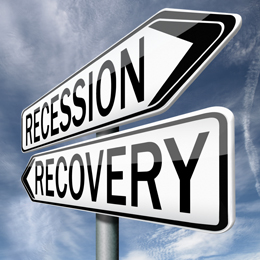 I’m a big believer in the lessons of history and, as regular readers know, always deeply skeptical of claims that “things are different this time.” So I can appreciate the arguments we’re hearing today that falling oil prices and interest rates signal trouble ahead.
I’m a big believer in the lessons of history and, as regular readers know, always deeply skeptical of claims that “things are different this time.” So I can appreciate the arguments we’re hearing today that falling oil prices and interest rates signal trouble ahead.
I'm just not sure the U.S. is in a position to worry.
Certainly, if we look at history, lower oil prices have often coincided with recessions, as reduced economic activity suppresses demand for, and therefore the price of, oil. Similarly, declining interest rates have often coincided with recessions. When economic growth slows, there is little demand for capital and no competition by borrowers to bid up borrowing costs—that is, interest rates.
A serious issue, but not a huge risk for the U.S.
The argument that we’re facing slower growth, and possibly even a recession, as both oil prices and interest rates decline has to be taken seriously. In both Europe and Japan, the issue is driving policy right now. The numbers suggest that policymakers had better get going, and fast. The risk is real—there.
Here in the U.S., however, I think we need to take a deeper look at the issue to see whether the fundamental economic factor that drives the historical relationships still holds. I would argue that, at the moment, it doesn't.
It’s a question of supply and demand
Historically, the common denominator driving declines in rates and oil prices has been lower demand. Prices are set by the interaction of supply and demand; when supply is constant, lower demand means lower prices. This has been the dominant effect over the past several decades, creating the historical link between limited demand and slower economic growth or recession. QED.
There is, however, another, less economically damaging cause of falling prices: increased supply. U.S. oil production has grown substantially, and oil supply overall has increased around the world much faster than demand. With a supply-driven price decrease, consumers effectively get a tax cut, which will increase demand. Because of the supply-driven nature of the change, lower prices will increase demand—the exact opposite of what history would suggest.
By the same token, lower interest rates don’t appear to be driven by a lack of demand by borrowers, at least here in the U.S. In the chart below, we see consistent growth in both consumer and business lending, with some acceleration over the past year or so.

If the demand for capital is there, as the chart shows it is, then the decline in interest rates must be driven by an increase in supply—precisely what we’re seeing as international investors send capital here. U.S. rates are still higher than in many developed markets, the American economy is stronger, and the currency is more robust. Sending capital here makes both theoretical and empirical sense for international investors.
Just as with supply-driven low oil prices, this increase in the supply of capital should, in fact, increase demand—and growth.
This time really might be different
While the U.S. certainly remains at risk from weakness elsewhere in the world, to take the declines in oil prices and rates as signs of doom is to misread the situation, in my opinion. The cause of the declines really is different this time, and the results should be too, even if the underlying economics are not.


 Print
Print


